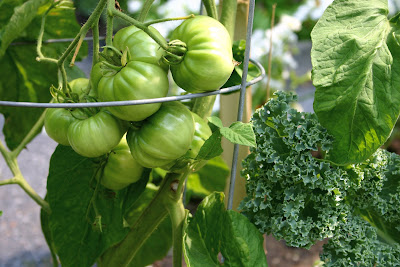
We knew
when we got Luther that his life expectancy would be shorter than the average bear's, a mere 8 years on average. The end of this month it will be 5 years since Lux Luther came to live on this planet. That was on Leap Day, Feb 29, 2008.
Can you believe it?!
What we were
not expecting was to have that time come any time sooner than eight years into this
grand adventure. We were not expecting a life or death decision before his 5th birthday. We were not expecting what we've been through these past few weeks.
It started innocently enough. You know all about the trials and tribulations of what seemed to be
Luther's allergies, requiring baths and vile-tasting medicines. Well, at some point, Luther stopped eating. Then, he stopped drinking.
I know that no one wants to hear the blow by blow description of what happened next. What IS it about medical catastrophes that make us want to rehearse each step, step
by step, in linear fascination? I will try to resist. I'll try to sum up. I probably won't succeed. Apologies.

To date Luther's medical catastrophe has involved a cardiologist, echocardiograms, IV's, internists and a host of an ever-changing cast of medicines - all of which [medicines] had to go down his throat manually, as he still wasn't eating. That's us above, by the way, waiting to have the last test done. . . .
We'd put Luther on a diet this summer and had gotten him down to 136 pounds. That was about a month ago. He looked great. When he went into hospital the day after my birthday, he was 119 pounds. That was about a week ago. It's been heartbreaking.
Suddenly, it appeared we had a dog with advanced heart disease. That was Tuesday. Then, just as suddenly, it appeared that we also had a dog with serious liver disease. That was - what - the next Monday? I forget. Both can cause anorexia - and it was painfully obvious that we now had an anorexic dog. Suddenly, nothing was more important than getting food into him. We stopped almost all the medication and concentrated on food and water.
Day by day we offered anything and everything we could think of which might tempt him to eat. I cooked for him, only to have him gently turn away. He's eaten only two things of his own free will: two bites of a canned food our vet sent home (that was just about a week ago) and two bites of
Carol's Canine Cookie Rolls, which you
know he loves. That was about 3 days ago, but I couldn't tempt him to eat any more of them after the first 2 bites. We've gotten any number of fool-proof and guaranteed-to-make-him-eat suggestions. They've all failed. . . .
Good friends Jenny and Ray (who care for a host of animals of their own) gave us the idea of using a syringe to get not only the chicken broth I'd made for him
into him, but also baby food. Thank you, God! We began measuring his intake of food first in tablespoons. Yesterday, one syringe at a time, we got over a cup of food into him. It's not enough to sustain him long-term, but at least he hadn't lost any more weight when he went in for what will likely be the last test we subject him to. We were shocked - but overjoyed - to see that he'd held at the weight he was when we took him home from hospital four days ago.
I've continued to learn so much from this beloved companion of ours. God's shown me that part of the preciousness of physical life lies in the physical fact that we all die. We lose the preciousness of life to the extent that we forget or manage to cover up the fact of death. Wouldn't it be ironic if the current spate of shootings nationwide was a perverted reaction to the relative cheapness of life that develops in a society that implies we can manage, protect and hold on to our lives forever by
buying things, whether it's insurance, a safer car, better food or a magic cream to ward off wrinkles and cancer?
I've learned that you can't buy life. You can buy medical treatments and the time of medical experts who will tell all about how all the different systems work, and how this medicine causes that to happen, but yet another medicine can help regulate what-have-you but how, in the long run, there's not much to be done when the body starts to shut down. So we can't buy life, but does that mean that we have to impose death? We hate uncertainty, don't we?! Ah, but where do we get the idea that we get to decide when it's over? This is a thorny question in the case of an animal we have responsibility for - whose care is in our charge. Do we call time? When? I don't have the answers. We're living this, right now.
Some time ago I read about what additional turmoil we put ourselves through in our aging on account of our continued and often unthinking medical interventions. Of course, I can't find the article any more. I probably "liked" it on facebook, thinking that would keep it on hand for me, but it hasn't. . . . What struck me was the author's chagrin at having dodged a potentially fatal illness on the part of his aging father, only to discover that it made decisions so much harder down the road. Having intervened in one area, many other areas were also impacted. Those other areas also seemed to require intervention if only to avoid the guilt of realizing that the initial intervention had not saved his father's life after all, but only killed him in a different and ultimately more painful way, and in a way that the author was now actually directing. It was an eye-opening article.
I've also learned an awful lot on the spiritual level. Physically, if we won't eat or drink, we won't live. Medicine will not help. Life support is not real life and force-feeding works only short-term. The same thing is true, spiritually. I understand more and more what St. Paul said when he spoke of having to give milk instead of solid food to those he was teaching. 'You were not ready for solid food', he said, '
and you're still not ready!' The writer of Hebrews takes up the same idea, but with reproach:
'You ought to be teachers at this point - feeding others - but you still need to be fed milk like a baby!' It's all well and good to be fed milk if you
are a baby; not so good if you're full grown.
I've been eating as much as I can, spiritually. I've been thanking God for the spiritual food
I've hidden in my heart to keep me well and prospering, spiritually. And I've been drinking from the one who said
"If anyone is thirsty, let him come to me and drink." Who knew that, in the end, the question may not be is there food and water, but are you hungry and do you thirst?
Luther does apparently thirst now, if only as a palate-cleansing reaction to having had food syringed into his mouth. We hope that he will again hunger. . . . he hasn't, so far. We can keep this up only so long.
Meanwhile, we wait on the results of a test that will show us just how bad the liver function is and a sort of last ditch test to see if maybe all of this is the result of something called
leptospirosis, which apparently causes (among other things) anorexia, dehydration, rapid and irregular heartbeat, and damage to the liver . . . . Check, check, check, check and check.
It is apparently treatable - although it may well leave us with a dog cured of leptospirosis, but one who eventually dies of heart and liver damage.
If Luther will not eat, we won't have much time in any event. Like I said, he is drinking for the moment, and the syringe-by-syringe feeding has kept him from sliding away altogether. But at some point, we'll have to call time. We just don't know yet when that will be. We keep hoping that tomorrow will be a better day. That maybe this afternoon he might decide to eat something. That perhaps we'll get a treatable diagnosis that will clear up all of this like waking up erases a bad nightmare we've been in. Two weeks ago, Luther was on a diet with a bit of a skin allergy. Today, he's in the equivalent of intensive care at home - with doctors on call - and really not knowing if he'll survive another day. It's been that way for the last nine days. Nine days of not knowing; nine days of deciding not to decide; nine days of just living and just hoping for another day, another tablespoon of food swallowed; nine days of alternating tears and quiet joy and even laughter; nine days of treasuring Lux Luther, the Leaping Laird of Light. My 'boy'. . . . my 'honey bear,' all the silly names we come up with in terms of endearment.
He's sleeping at the moment, covered by a blanket. He seems to take comfort being covered these days. Or maybe I just take comfort, covering him, I don't know. I hate to wake him, but it's time for the next feeding. The hours go quickly. At the moment, no news is good news. He sleeps, he wakes, he drinks, he endures 2 or 3 syringes of mush, he submits to a couple of pills, he changes scenery and moves to a different pillow. He sleeps. Occasionally, we go outside and he sniffs the air. He pees. He sniffs. He turns around to go back inside. Yesterday, it was 53 degrees and we put his bed out in the sun. He slept under a blanket for a good two hours. I refused to wake him.

Every day is a gift. Bittersweet. The first and last time we may be able to do this.
He's "only a dog" - I know. Some may feel offended that we do and feel so much for a pet, when others are going through so much with
people, with their husband, wife, father or mother, or [God have mercy] a child. . . .
I make no apology. I don't seek to compete with anyone else's grief, trial or loss. Luther is
our dog and we love him and one day - probably one day soon - we're losing him. It's hard to take on board. And yet it makes today the most important day of my life. I suspect that every day is supposed to be like this.













































